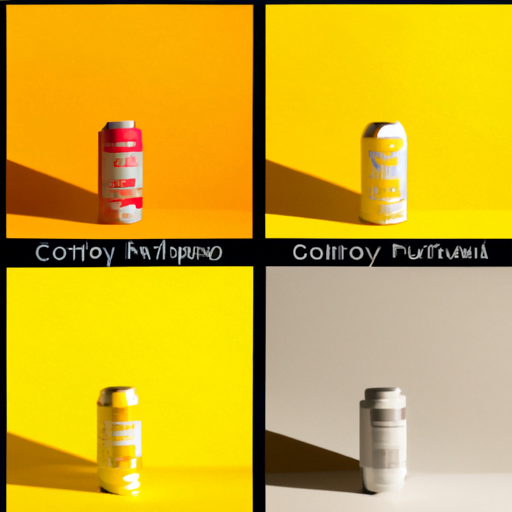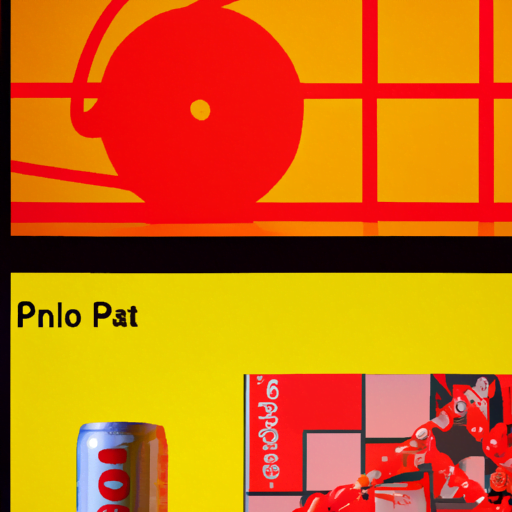
-
Table of Contents
The Role of Contrast and Brightness in Design

When it comes to design, contrast and brightness play a crucial role in creating visually appealing and effective compositions. These two elements have the power to grab attention, guide the viewer’s eye, and convey important information. In this article, we will explore the significance of contrast and brightness in design and how they can be utilized to enhance the overall user experience.
Understanding Contrast
Contrast refers to the difference in visual properties such as color, tone, or texture between two or more elements in a design. It helps to create separation, hierarchy, and emphasis, making the content more readable and engaging. By using contrast effectively, designers can draw attention to specific elements and guide the viewer’s focus.
One of the most common examples of contrast is the use of black and white. The stark difference between these two colors creates a strong contrast that is easy to perceive. This contrast is often used in typography, where black text on a white background ensures maximum legibility.
Another example of contrast is the use of complementary colors. Complementary colors are opposite each other on the color wheel, such as blue and orange or red and green. When used together, they create a vibrant and visually striking contrast that can be used to highlight important elements or create a sense of energy and excitement.
The Importance of Contrast in User Interface Design
In user interface (UI) design, contrast plays a crucial role in creating a clear and intuitive user experience. By using contrast effectively, designers can differentiate between different elements and provide visual cues to guide users through the interface.
One area where contrast is particularly important in UI design is in button design. Buttons are interactive elements that require attention and action from the user. By using a high contrast color for buttons, designers can ensure that they stand out from the rest of the interface and are easily identifiable as interactive elements.
Contrast is also essential in creating accessible designs. People with visual impairments or color blindness may have difficulty perceiving low contrast designs. By using sufficient contrast between text and background colors, designers can ensure that their content is accessible to a wider audience.
The Role of Brightness in Design
Brightness refers to the overall lightness or darkness of an element. It can be used to create depth, focus, and mood in a design. By adjusting the brightness of different elements, designers can create visual hierarchy and guide the viewer’s attention.
One way to use brightness effectively is by employing the concept of the focal point. By making a specific element brighter than the surrounding elements, designers can draw attention to it and make it the focal point of the composition. This technique is often used in photography, where a bright subject against a darker background creates a visually striking image.
Brightness can also be used to create a sense of depth in a design. By using lighter colors for foreground elements and darker colors for background elements, designers can create the illusion of depth and make the design more visually engaging.
Case Study: Apple’s iOS Design
Apple’s iOS design is a great example of how contrast and brightness can be used effectively to create a visually appealing and user-friendly interface. The use of high contrast colors for buttons and icons ensures that they stand out and are easily identifiable as interactive elements. The brightness of the icons against the darker background creates a sense of depth and makes the interface visually engaging.
Furthermore, Apple’s iOS design also takes into account accessibility by using sufficient contrast between text and background colors. This ensures that the content is readable for users with visual impairments or color blindness.
Statistics on the Impact of Contrast and Brightness
Several studies have shown the impact of contrast and brightness on user experience and perception. According to a study conducted by the Nielsen Norman Group, users are more likely to notice and interact with elements that have a high contrast compared to elements with low contrast. This highlights the importance of using contrast effectively to grab the user’s attention and guide their focus.
Another study conducted by the University of Toronto found that the brightness of a website significantly affects the user’s perception of its credibility. Websites with higher brightness were perceived as more trustworthy and reliable compared to websites with lower brightness. This emphasizes the role of brightness in creating a positive user perception.
Key Takeaways
- Contrast is the difference in visual properties between elements and is crucial for creating separation, hierarchy, and emphasis in design.
- Complementary colors and black and white are common examples of contrast.
- Contrast is particularly important in UI design to create clear and intuitive user experiences.
- Brightness can be used to create depth, focus, and mood in a design.
- Effective use of contrast and brightness can enhance the overall user experience and perception of a design.
Conclusion
Contrast and brightness are powerful tools in design that can significantly impact the effectiveness and aesthetics of a composition. By understanding the role of contrast and brightness, designers can create visually appealing and user-friendly designs that grab attention, guide the viewer’s eye, and convey important information. Whether it’s in UI design, photography, or any other form of visual communication, contrast and brightness should be carefully considered to create impactful and engaging designs.
